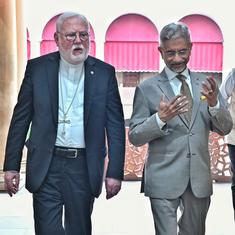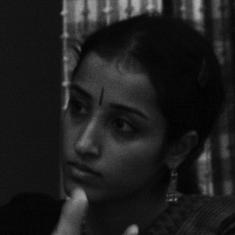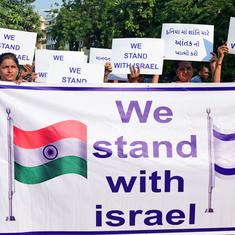In the days leading up to the inaugural edition of the Indian Women’s League, there seemed to be an air of furtiveness, with not much known either about the teams, or about the tournament format for that matter.
However, the gradual buildup of frenzy and excitement as the tournament progressed, before finishing with a crescendo in the final on February 14 served to fulfil the purposes with which the IWL had been instituted. Of bringing a wider connect between the country’s footballing audiences with the hitherto unexplored ambit of the women’s playing field within the country. And, most importantly, trying to bring women’s football on an equal standing with that of their male counterparts through a national league.
Why the Indian Women’s League matters?
Here the frame which we were craving to see for long. Finally the #IWL is all set to roll on Jan 28. Come, cheer for our girls #ShePower pic.twitter.com/bO5XCnTjrx
— Indian Football Team (@IndianFootball) January 24, 2017
“[The IWL] met the expectations [of having a women’s football league] because the League provided a platform to so many people, [to so many] women footballers out there,” Dalima Chhiber, captain of FC Pune City, told Scroll.in, describing the biggest talking point that the IWL generated. “They got a chance to come up and showcase their talent and share the field with so many experienced players. They got a chance to experience what real women’s football is, like competitiveness, the dedication to win and the will of not giving up.”
Considering that Chibber led a squad that featured a pre-teen prodigy in the 12-year-old Senorita Nongpluh, who had had her own success story spun-off from the mainstream IWL action, she wasn’t off-target with her assessment. Then, between Nongpluh and India’s former national captain, the 36-year-old Oinam Bembem Devi, who skippered the Eastern Sporting Union to a commanding 3-0 titular win over Rising Student FC, the IWL was the bridge that connected different eras within Indian women’s football.
The early showcasing of Nongpluh’s talent on the national stage because of the IWL made a strong case about one more name being added to the coffer of India’s football future. Additionally, it also brought about an inference that, going forward, the IWL had the potential to bring more of such similarly unknown talented youngsters to the forefront.
More women’s leagues, more highlighting of women’s football
“There’s [a] need to improve the state of women’s football [in India],” Rising Student FC’s captain Sashmita Malick told Scroll.in when asked about the prevalent deep-rooted disparity between the two halves of the sport. “I just want that women’s football is also given its due. The All India Football Federation is focusing on improving men’s football. [But] we [women’s footballers] should also get the help we need. Our rankings are better than the men’s rankings. Men’s football has to [therefore] catch up with us in the rankings.”
While this dichotomy – until the advent of the IWL – meant that women’s football in the country was starved of well-branched competition, even as men’s football benefited with the conceptualisation of the I-League and ISL as additions to the long-existing league-based fixtures, it also lent to Indian women being affected on the sport’s global platform vis-à-vis other countries.
Malick was then quick to note, “In foreign countries, there are a lot of football leagues for women. Their game has improved as a result. Because of absence such leagues, we were, however, not on par with the foreign teams. As a result, our game has also been far behind as compared to the foreign teams’.”
Jonathan Lalbiakkima, coach of the Aizawl FC, echoed Malick’s statements about the dearth of leagues affecting the spectrum of women’s football. “We need more state leagues. If there are proper state leagues, there will be more development among the women [footballers] from my point of view. The state football associations have to provide more tournaments for the women’s team, no? In Mizoram, in Aizawl, I think we have only two tournaments in a year. So, we need more tournaments like that, even in the national level also, like the I-League.”
Emphasis on more team numbers in the IWL
Here the frame which we were craving to see for long. Finally the #IWL is all set to roll on Jan 28. Come, cheer for our girls #ShePower pic.twitter.com/bO5XCnTjrx
— Indian Football Team (@IndianFootball) January 24, 2017
Conjoined with there being a need to have an increased number of tournaments, there’s also a need felt to have more number of teams participating in the IWL.
This year, there was a notable change in the eventual IWL format when four teams from the preliminaries were slotted into the draw along with two new teams – FC Pune City and Aizawl FC – instead of the previously mentioned two. The truncated offering by way of team composition didn’t alter the qualitative pitch to the event. But going forward it has been hoped that the IWL team bracket would be widened, which in turn would bring about its own set of advantages.
“If we were to have more number of teams in the League next year, it will benefit everyone. Since this is an all-India league, we can discover more talent across the country,” opined Malick, before adding, “It will also motivate the players to focus on their game so that can perform better in a national league of this kind. In men’s football, there are more number of teams playing. It should be the same in women’s football.”
For the time being though, the prospect of having more teams joining in on the IWL fervour remains an untold narrative for a new season. However, if – and when – the eventuality transpires, it promises to have a few significant exploratory trajectories of its own that would contribute their tinge to the initial splash created by the IWL.










